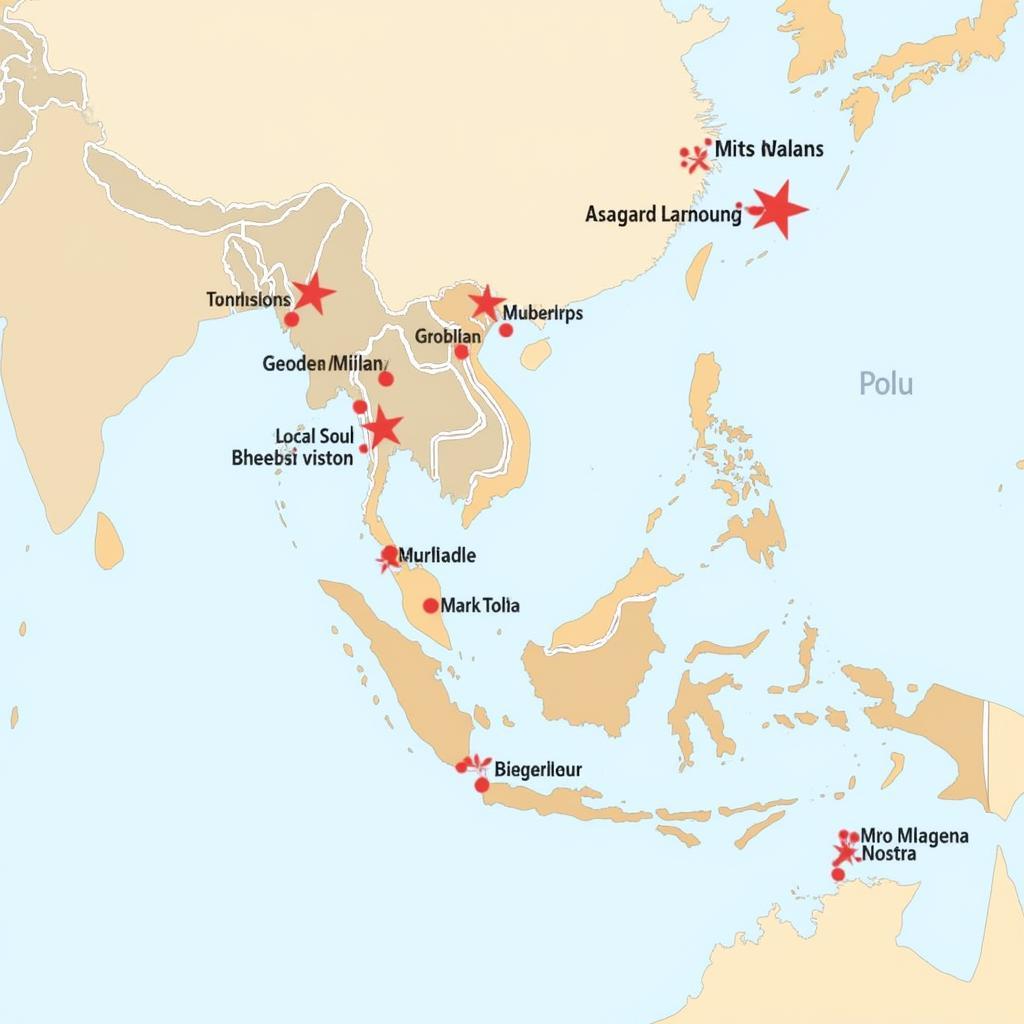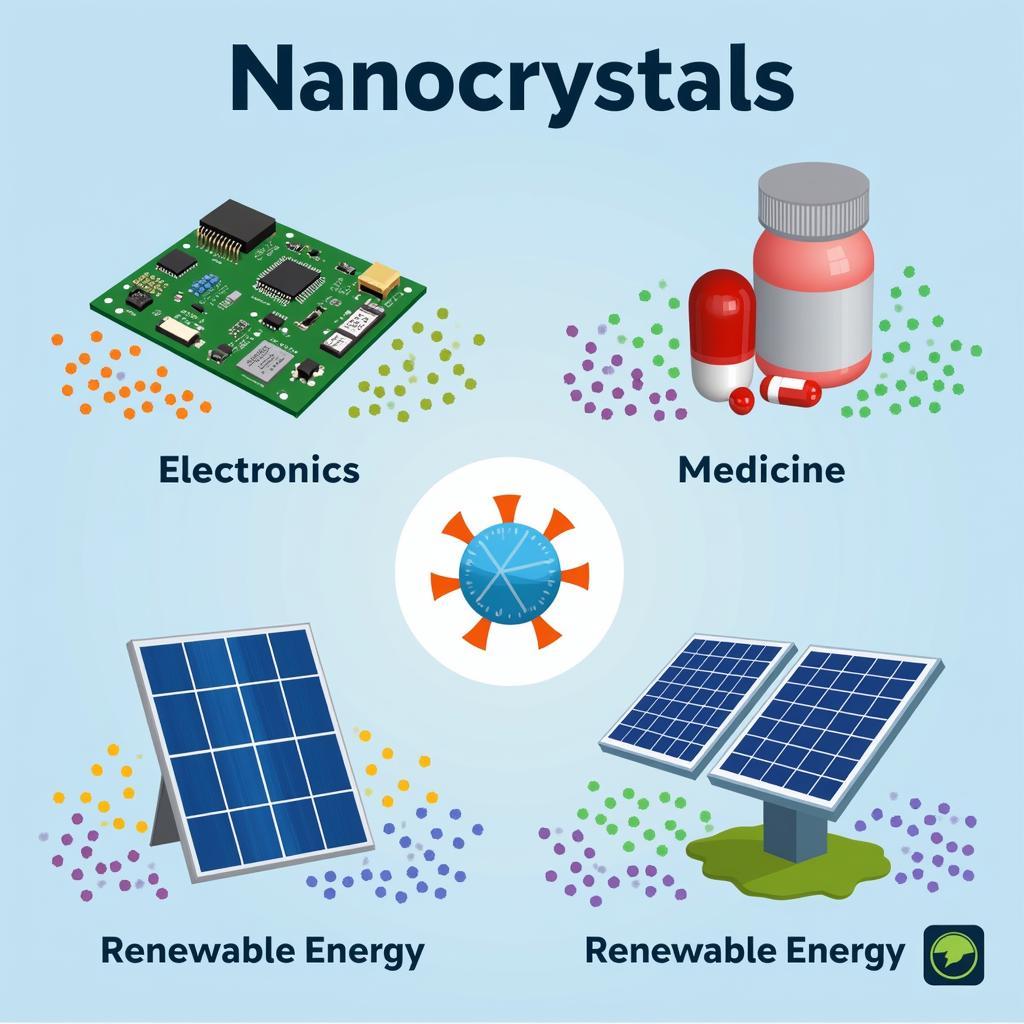The Association of Southeast Asian Nations (ASEAN) is a prominent intergovernmental organization in Southeast Asia. So, When Was Asean Created? The answer is August 8, 1967, marking a pivotal moment in the region’s history.
The Founding of ASEAN: A Historical Overview
The signing of the Bangkok Declaration in 1967 officially established ASEAN. This pivotal agreement, signed by the foreign ministers of Indonesia, Malaysia, the Philippines, Singapore, and Thailand, laid the groundwork for regional cooperation and integration. The declaration outlined the organization’s primary goals: to accelerate economic growth, social progress, and cultural development, promote regional peace and stability, and collaborate on matters of mutual interest. The formation of ASEAN represented a collective desire to foster a peaceful and prosperous Southeast Asia.
Why Was ASEAN Created?
Several factors contributed to the creation of ASEAN. The desire for regional stability amidst the Cold War, the need for economic cooperation, and the shared cultural heritage of Southeast Asian nations played crucial roles. The founding members recognized that by working together, they could address common challenges and build a stronger, more resilient region. The threat of communism, growing nationalism, and territorial disputes also fueled the need for a unified platform to manage these complex issues.
The Cold War Context and ASEAN’s Formation
The Cold War backdrop significantly influenced the creation of ASEAN. The region was grappling with the spread of communism, and the founding members sought to create a bulwark against its influence. By fostering regional cooperation, they aimed to strengthen their collective resilience and protect their shared interests.
ASEAN’s Expansion and Evolution
Since its inception, ASEAN has expanded to include Brunei Darussalam, Vietnam, Laos, Myanmar, and Cambodia. This expansion reflects the growing recognition of ASEAN’s importance in the region and its ability to promote peace and development. The organization has evolved significantly since 1967, adapting to the changing geopolitical landscape and addressing emerging challenges such as climate change, terrorism, and cybersecurity.
 ASEAN Leaders at a Modern-Day Summit
ASEAN Leaders at a Modern-Day Summit
Key Milestones in ASEAN’s History
- 1967: The Bangkok Declaration marks the official establishment of ASEAN.
- 1992: The ASEAN Free Trade Area (AFTA) is established to promote economic integration.
- 1997: The ASEAN Vision 2020 is adopted, outlining a roadmap for a more integrated and cohesive ASEAN.
- 2007: The ASEAN Charter is signed, formalizing ASEAN’s legal framework and institutional structure.
- 2015: The ASEAN Economic Community (AEC) is launched, further deepening economic integration.
ASEAN’s Impact on Southeast Asia
ASEAN has had a profound impact on Southeast Asia. It has fostered peace and stability, promoted economic growth, and facilitated cultural exchange. The organization has played a crucial role in resolving regional conflicts, managing territorial disputes, and promoting dialogue among member states. ASEAN’s efforts have contributed significantly to the region’s remarkable economic development and its growing integration into the global economy.
Expert Insights on ASEAN’s Significance
Dr. Maria Lourdes Sereno, a prominent Southeast Asian historian, notes, “ASEAN’s formation was a watershed moment in the region’s history. It marked a shift towards regionalism and cooperation, laying the foundation for decades of peace and prosperity.”
Professor Chandra Kumar, an economist specializing in Southeast Asian economies, adds, “ASEAN has been instrumental in driving economic growth and integration in the region. Its initiatives have facilitated trade, investment, and the free flow of goods and services, contributing to the region’s dynamic economic performance.”
When was ASEAN created? A Legacy of Cooperation
ASEAN’s creation on August 8, 1967, marked a significant turning point in Southeast Asian history. The organization has evolved into a vital force for regional cooperation, contributing to peace, stability, and economic development. As ASEAN continues to navigate the challenges and opportunities of the 21st century, its commitment to collaboration and integration remains crucial to the region’s future.
 The ASEAN Flag: A Symbol of Unity and Diversity
The ASEAN Flag: A Symbol of Unity and Diversity
FAQ
- What does ASEAN stand for? ASEAN stands for the Association of Southeast Asian Nations.
- How many members does ASEAN have? ASEAN has ten member states.
- What is the purpose of ASEAN? ASEAN aims to promote regional peace, stability, and economic development.
- Where is the ASEAN headquarters located? The ASEAN Secretariat is located in Jakarta, Indonesia.
- What are some of ASEAN’s key achievements? Key achievements include the establishment of the ASEAN Free Trade Area (AFTA) and the ASEAN Economic Community (AEC).
- How does ASEAN contribute to regional peace? ASEAN promotes dialogue and cooperation among member states to resolve conflicts and manage territorial disputes.
- What is ASEAN’s role in the global economy? ASEAN plays an increasingly important role in the global economy, facilitating trade and investment and promoting regional economic integration.
Need assistance? Contact us 24/7: Phone: 0369020373, Email: [email protected], Address: Ngoc Lien Village, Hiep Hoa, Bac Giang, Vietnam.


